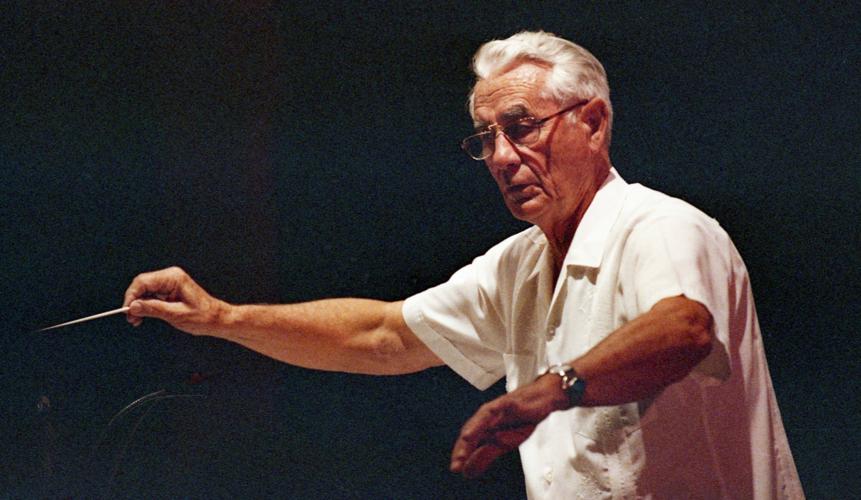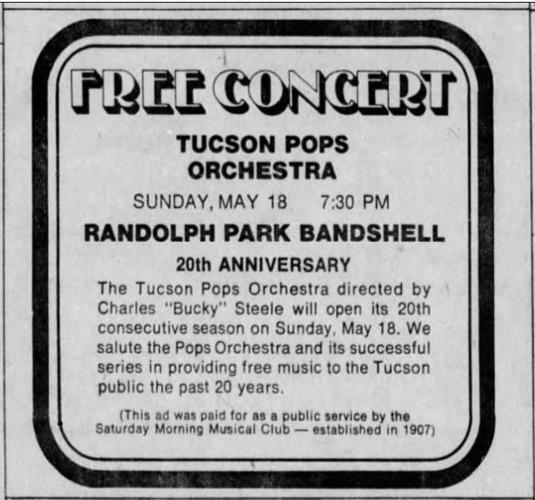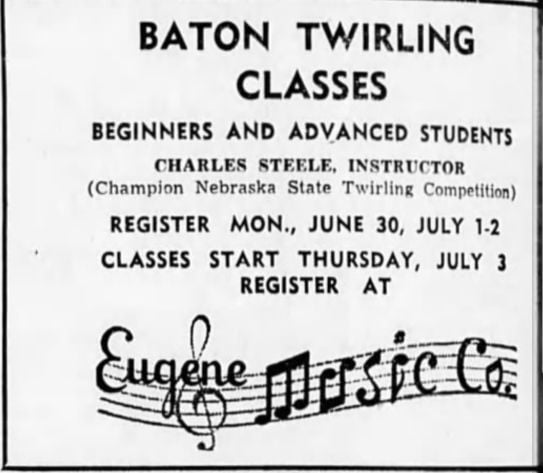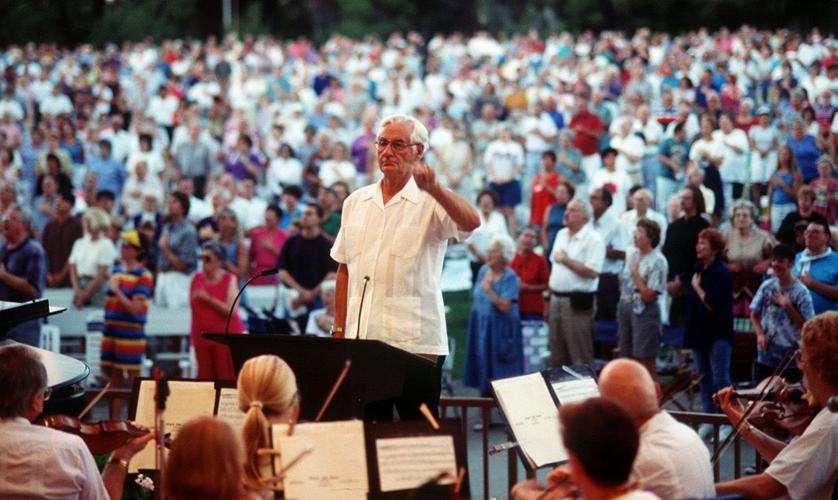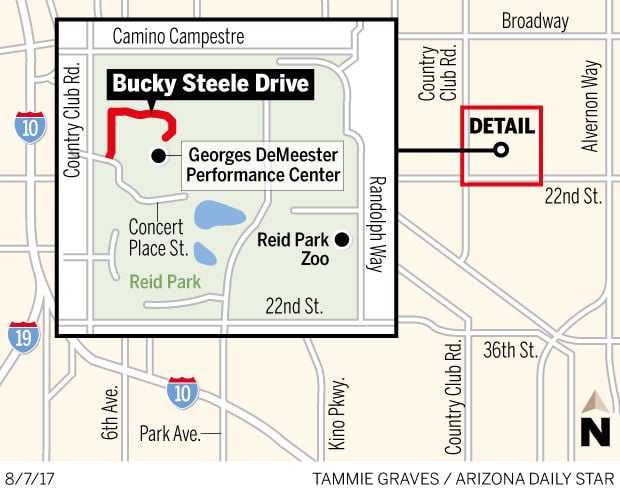Charles “Bucky” Steele got his start in the music business at age 12, playing drums for an adult country group in a Nebraska dive bar. Chicken wire was stretched in front of the bandstand to prevent beer bottles from hitting the musicians.
From that inauspicious beginning, he went on to a well-known career in the Old Pueblo as director of bands for Tucson High School and later as conductor of the Tucson Pops Orchestra.
Steele was born on a ranch in Scottsbluff, Nebraska, in 1922 and spent his youth in the midst of horses and livestock. His great uncle gave Charles and his brother Howard the nicknames “Bucky” and “Bud” based on his two prized horses. During his high school days, “Bucky” played drums and led his school band, managing to become the Nebraska State Twirling Champion.
In 1941, he departed Scottsbluff to join the Navy, where he played in the U.S. Navy Fleet Band for six years. While serving he married Virginia Gompert, whom he had known from Nebraska; they later had three sons, Steve, Chuck and Bruce.
Following the war, Steele graduated from the U.S. Navy School of Music in Washington, D.C., then received his bachelor’s degree at the University of Wyoming and his master’s at the University of Oregon, while also teaching at both universities. While living in Eugene, Oregon, he headed the fine arts department at Cottage Grove High School and played timpani or kettle drums for the Eugene-Springfield Community Orchestra.
In 1958, Steele relocated to the Old Pueblo and took over as band director for Tucson High School after director Paul L. Grimes transferred to the new Rincon High School.
He led THS’ “Marching 100 Band” at the Amphitheater-Tucson football rivalry game during halftime that year, as the band presented the “Badger Bandwagon,” a selection of numbers from all shows of the season. After the game a dance was held for both schools with entertainment by Tucson High musical trio Buster Forgey, John Warnock and Mel Jenks.
In 1959, Steele took his band to Nogales to participate in the annual Cinco de Mayo Parade where they played “Cha Cha Sorella” and “St. Louis Blues March.” The next year the Marching 100 Band earned honors at the University of Arizona Senior and Band Day, where it put on “A Salute to George Gershwin.”
In the mid-1960s, the band shared tunes with a Wild West flavor at Hughes Aircraft Co.’s annual employee picnic held at Old Tucson Studios, but it wasn’t able to raise enough money to represent Arizona in the Mardi Gras band competition in New Orleans.
After a divorce from his first wife, Steele married Jeanne, a librarian at the Tucson Symphony Orchestra, in 1969. By 1970, Steele was in charge of all Tucson High School bands including its jazz band, which participated in several Northern Arizona University Jazz Festivals in Flagstaff.
In 1973, while still employed at Tucson High, Steele took over as conductor of the 50-piece Tucson Pops Orchestra, which held its concerts at the Randolph Park Bandshell (later Reid Park Bandshell), when its founder, Georges DeMeester, retired. Steele had been a percussionist with the Pops since 1958 but would now lead the concerts with wife Jeanne introducing the numbers. Included in these concerts were Broadway show tunes, motion picture scores and classical compositions.
In a 1974 concert featuring The Tom Patrick Trio jazz group, the orchestra drew a record crowd of 5,200. It topped that record the following year as Steele and his musicians, playing medleys from “Oklahoma” and “Mary Poppins,” brought in more than 7,000 listeners.
When former teen idol Frankie Avalon held a free concert in September 1976, it featured Steele and the Tucson Pops at what is now called the Tucson Convention Center. Avalon sang some of his crowd favorites such as “Venus” and “Dede Dinah,” followed by Steele and crew offering a mix of marches, pop songs and a medley from the television series “Victory At Sea.”
In May 1983, Arizona Daily Star arts critic M. Scot Skinner wrote, “The sounds of the Tucson Pops have been gracing the outdoors for 28 years now, and the concerts show no visible signs of waning popularity. The orchestra has built a loyal and ever-changing audience over the years. ... This Sunday’s concert will feature music by Stevie Wonder and John Philip Sousa.”
On June 15, 1997, Steele conducted his final Music Under the Stars program, featuring noted percussionist Homero Ceron, before handing over the baton to Laszlo Veres.
After Steele retired, Jim Ronstadt, head of the Tucson Parks and Recreation Department, suggested the name Bucky Steele Drive for the new street being built to the DeMeester Performance Center (formerly the Reid Park Bandshell) with the Tucson City Council bringing forth Resolution No. 17737 to make it official.
“One of Bucky’s other passions that he was involved in for many years,” Jeanne Steele noted, “was the Tucson Rodeo Parade and Museum for which he served as chairman in 1982 and 1983. Being surrounded by Old West wagons, harnesses and tools made him feel at home like when he was a kid.”
Bucky Steele died in 2013.


